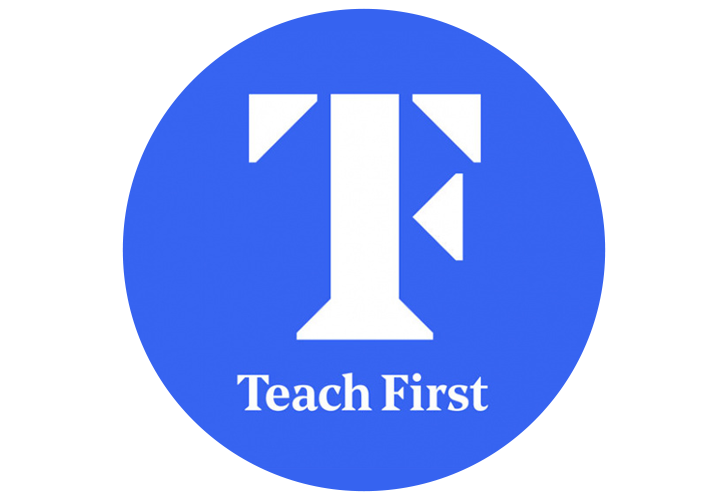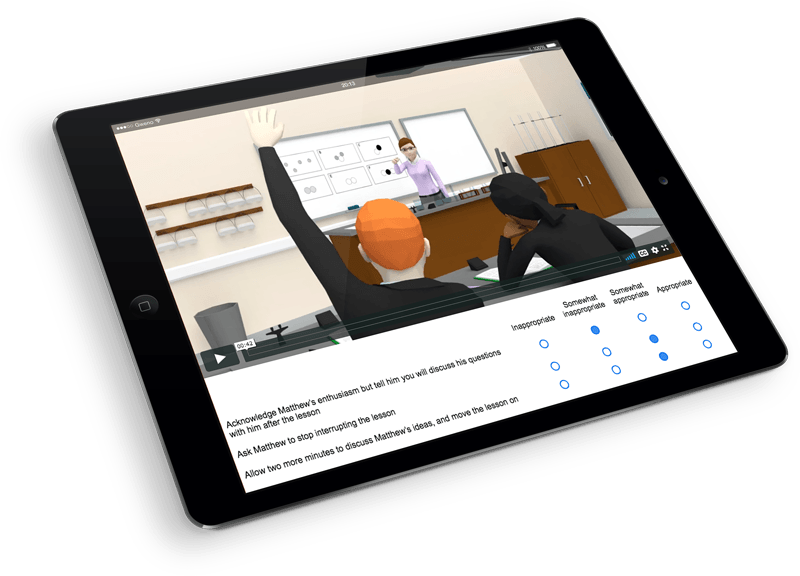
Teach First: Using SJTs for selection
By Rebecca Tickell
We caught up with Tallulah Bygraves, Selection Manager at Teach First to hear more about their close partnership with TSP.

Who are Teach First?
Teach First are a charitable organisation established in 2002, that works with schools to train and develop teachers at all stages of their career journey, from beginning teacher to school leader. They work with schools that serve communities facing high levels of economic deprivation and have placed more than 12,000 teachers in low-income areas to date.
Partnership with TSP
TSP has a well-established partnership with Teach First, which began back in 2014. We met up with Tallulah Bygraves who is Head of Selection at Teach First, to find out a little bit more about their work and how they’re working with TSP to support teachers and leaders who are determined to make a difference to the lives of the pupils they teach.
Selection sits together with the wider recruitment team at Teach First. Identifying candidates that successfully meet the competencies Teach First have identified for selection, from empathy to planning and organisational skills, is a big part of the job. When she first met Professor Rob Klassen, Director of TSP, to discuss how Teach First could use situational judgement testing (SJT) to help them to select the best candidates for their programmes, the team had a good idea of what they were looking for. They knew that they needed a reliable and accurate tool to help them to select quality candidates with the right skills, motivations and attributes to work in schools in challenging contexts. For Tallulah, this understanding of what was needed to be successful also came from her own first-hand experience of the Teach First programme. Having joined the Teach First’s 2009 cohort as a trainee biology teacher, she knows what it takes to teach in schools facing significant challenges.

Tallulah by her own admission is a bit of a “recruitment geek”, she has thoroughly enjoyed the process of SJT development and refinement across two seasons of selection. Working closely with the team at TSP to ensure that these selection tools were fit for purpose, has been enriching and enjoyable for the wider team at Teach First too. Qualtrics has been used to develop tools that help integrate the SJTs into their processes, enabling real-time scores and feedback for participants. The newly developed TSP platform will build on this functionality, providing Teach First’s selection team with the additional tools they need to track trainee growth across their two year programmes.
Tallulah explained that personalised selection tools, like the SJT also provide a window into the Teach First programme for prospective applicants. Offering a glimpse into the day-to-day life of a Teach First trainee is important for selection and it has already had an impact in terms of giving candidates an accurate reflection of what Teach First is all about, underpinned by their mission statement ending inequality in education.

Situational Judgment Tests
You might be asking yourself right about now, what is a situational judgement test and what are the advantages of using them?
An SJT can be used to assess job related skills e.g. problem-solving and decision making, that may be difficult to measure using typical interview protocols. They’re valuable tools for the selection of applicants, as they demonstrate high validity for predicting future job performance. They’re also really useful for training and development purposes.
A couple of TSP Insights are available that give a bit more detail around how and why they’re used here and here.
Teach First have taken time to develop the rubrics needed to measure the competencies they’re looking for but ultimately, from Tallulah’s perspective, all of it is about finding and recognising potential.
Even in the current climate with regard to a worrying drop in trainee teacher numbers (please visit ‘catastrophic’ recruitment data for an insight into this issue).
Teach First receives more applications than they have places. Consequently, they need to select the ‘best’ candidates for the programme, currently accepting approximately 1,500 trainees on the programme per year. Bearing this in mind, contextual recruitment is vitally important and that’s another advantage of using SJTs. The SJTs used by Teach First, developed in partnership with TSP, are bespoke to their needs, reflecting the diversity and contexts of the schools successful applicants will be teaching in. For the selection team at Teach First, maintaining quality is paramount to their bottom line, even though we’re facing a national recruitment crisis.
Teacher assessment to teacher development
The Teach First Assessment Centre changed its name and its focus to the Development Centre back in 2018 and since then, the selection team have been working extensively on using and developing selection tools that lead to growth. Successful candidates entering the Teach First teacher training and development programmes, will have gone through a challenging assessment process at the development centre. The selection team is committed to ensuring that participant data collected during this time is put to good use. For example, how candidates tackle and solve problems proves a useful insight into their capabilities and thought processes. Teach First actively looks for candidates who are self-evaluative and able to respond positively to feedback. The reports generated by the selection tools developed in partnership with TSP, enable participants to consider their strengths and identify areas for development, providing them with the challenge needed to set appropriate development goals. As Tallulah points out, trainee expectations are high and they want the best training and development possible.
Equality of opportunity
As Teach First is a high-performance graduate route into teaching, some candidates who have the potential to make great teachers may not have met the academic qualifications required to be accepted onto the programme, which is a real loss to the profession. For example, as they may be applying from a position of socioeconomic disadvantage themselves, this puts them at an immediate disadvantage with regard to someone who has gained their GCSEs and A-levels at a school serving a more socioeconomically advantaged catchment. Tallulah explains that using SJTs could be used as one way of selecting applicants more fairly e.g. on the basis of aptitude. Trying to level the playing field when it comes to selecting the ‘best’ candidates, is an important part of the selection team’s wider vision and work and you can read more about it, in Tallulah’s blog post.
Impact
Measuring the impact of using SJTs as a recruitment tool for teaching is, in many respects, as difficult as measuring the quality of teaching, simply because there are so many metrics to choose from. For Teach First, possible impact measures could be retention data; successful completion of the Postgraduate Diploma in Education and Leadership (PGDE) qualification and/or observational data. However, research conducted on T-Insight by Klassen et al (2021) and Bardach et al (2021) shows that use of our scenario-based learning tools makes a significant impact on trainees’ classroom readiness and self-efficacy before they enter the classroom.
In essence, measuring the ‘true’ impact of SJTs as a selection tool at Teach First is still a work in progress. As tools for selection, Tallulah reports that they’re effective and the selection team can use the outcome data to identify if candidates might be suitable for a teaching career. For example, they’re particularly useful when selecting candidates who might be a borderline ‘yes’ from the tasks completed, as part of the selection process, for acceptance onto a programme. Moving forward, Tallulah is looking forward to working on this with Rob and the TSP team, as an opportunity to actively engage in educational research and to further refine and develop the selection tools used by the Development Centre at Teach First.
Next Steps
Tallulah and the selection team have already discussed some meaty ideas:
1. Partnering with the team at TSP to drill into performance data even further to try and understand performance metrics in different ways. This includes looking at demographic data and competencies to continue the work already started on evaluating the impact of the SJTs. Also, looking at SJT scores to see how candidates have scored in the domains is an area Teach First are keen to explore.
2. Teach First offers a range of leadership training and development programmes for established teachers, known as National Professional Qualifications (NPQs). Currently, selection of candidates for these NPQ programmes is via an application form but could SJTs be used to select suitable candidates instead? Presenting applicants with scenarios they might face as a school leader could be both a selection and development tool, SJTs could also help teachers to decide which NPQ is right for them and could lead to pathways that they hadn’t even considered for themselves.
The key thing is that Teach First and TSP continue to mutually benefit from their work together, sharing data and research to inform and develop good practice in the areas of Teacher Succession and development.
